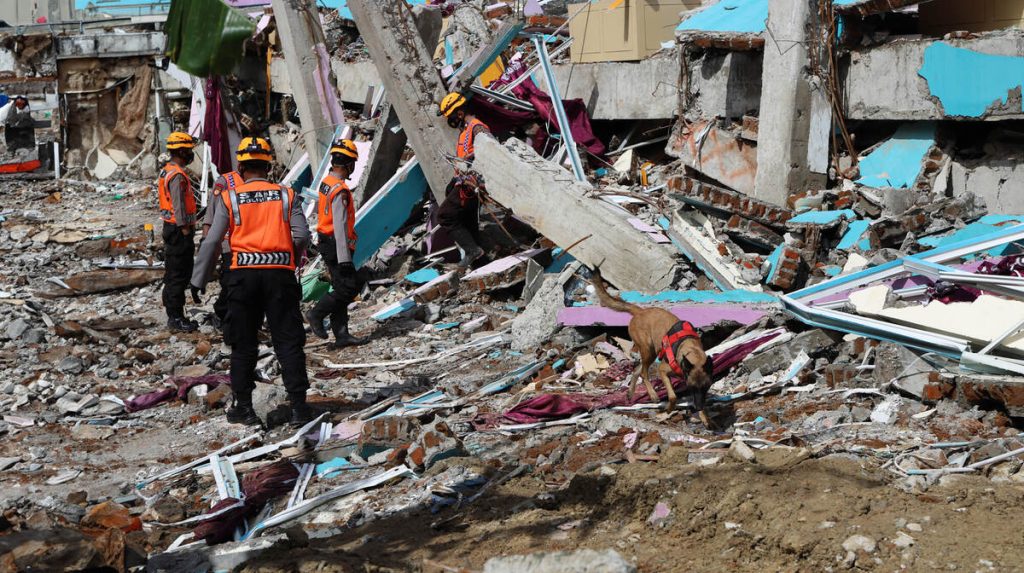
Understanding the Link Between Natural Disasters and Public Policy
Natural disasters have long been a driving force behind public policy reforms, compelling governments to reassess their preparedness, response strategies, and long-term infrastructure planning. Earthquakes, in particular, pose unique challenges due to their sudden and unpredictable nature. Unlike hurricanes or floods, which may provide some level of warning, earthquakes can strike with little to no notice, making proactive policymaking essential in minimizing damage and saving lives.
Public policy serves as the backbone of disaster mitigation, guiding everything from land-use regulations to emergency response coordination. Policies that govern building codes, disaster preparedness, and relief efforts can determine how effectively a society recovers from an earthquake or other seismic events. When policymakers integrate scientific research, technological advancements, and community engagement into disaster planning, the result is a more resilient society better equipped to handle future earthquakes.
Several key themes emerge when examining how earthquakes influence public policy. Preparedness efforts, such as education and early warning systems, play a significant role in reducing casualties. Emergency management frameworks determine the speed and effectiveness of post-disaster response. Infrastructure resilience, guided by seismic building codes and engineering innovations, directly impacts how well structures withstand tremors. This article explores how recent earthquakes have shaped public policy worldwide, offering critical lessons in disaster response and resilience.
Recent Earthquakes and Their Policy Impacts
Over the past decade, several major earthquakes have tested the resilience of nations and prompted shifts in public policy. The 2011 Tōhoku earthquake in Japan, which triggered a devastating tsunami and the Fukushima nuclear disaster, led to a complete overhaul of the country’s nuclear safety regulations. It also spurred advancements in earthquake early warning systems, demonstrating the importance of real-time alerts in reducing fatalities.
Similarly, the 2015 Nepal earthquake exposed significant gaps in infrastructure resilience and emergency response. The widespread destruction of homes, roads, and cultural heritage sites highlighted the need for stricter building codes and international cooperation in disaster recovery efforts. In response, Nepal implemented enhanced seismic guidelines for new construction and expanded disaster education initiatives.
The 2023 Turkey-Syria earthquake further underscored the devastating impact of inadequate enforcement of building codes. Despite previous regulations requiring earthquake-resistant designs, many structures collapsed due to poor compliance and corruption in the construction industry. The disaster reignited discussions on policy enforcement, disaster preparedness, and the role of government oversight in ensuring safer infrastructure.
Each of these cases illustrates how governments often respond reactively to earthquakes rather than proactively addressing vulnerabilities beforehand. However, the lessons learned from these events continue to shape disaster policies worldwide, emphasizing the need for stringent regulations, better enforcement, and improved coordination between local and international agencies.
Lessons in Preparedness and Risk Reduction
Preparedness is a critical component of earthquake mitigation, as proactive measures can significantly reduce casualties and property damage. One of the most effective strategies in earthquake-prone regions is the implementation of strict building codes that require structures to withstand seismic forces. Countries like Japan and Chile have set global standards for earthquake-resistant construction, using base isolators, flexible materials, and innovative architectural designs to absorb shocks and minimize damage.
Beyond infrastructure, public education plays a crucial role in preparedness. Countries with frequent seismic activity conduct regular earthquake drills in schools, workplaces, and public spaces to familiarize citizens with evacuation procedures. In California, for example, the Great ShakeOut drill encourages millions of people to practice “Drop, Cover, and Hold On,” ensuring that individuals know how to protect themselves during a quake.
Early warning systems further enhance preparedness by providing crucial seconds or minutes of advance notice before seismic waves reach populated areas. Japan’s Earthquake Early Warning (EEW) system, which uses a network of seismometers to detect tremors and send alerts to residents and businesses, has proven highly effective in reducing injuries and property damage. Expanding access to such warning systems can be a game-changer in global disaster preparedness efforts.
The Role of Emergency Management in Earthquake Response
Once an earthquake strikes, an effective emergency management system determines how quickly and efficiently a region can recover. Governments rely on specialized agencies to coordinate rescue efforts, allocate resources, and provide humanitarian aid to affected communities. However, the success of these efforts often depends on disaster preparedness funding, which ensures that emergency response teams have the necessary training, equipment, and infrastructure in place before disaster strikes.
In the United States, the Federal Emergency Management Agency (FEMA) leads disaster response efforts, working alongside state and local governments to provide relief and rebuild infrastructure. In India, the National Disaster Management Authority (NDMA) plays a similar role, focusing on both disaster preparedness and response. Securing adequate disaster preparedness funding allows these agencies to pre-position supplies, strengthen communication networks, and implement early warning systems that save lives.
Technological advancements have also improved emergency management capabilities. Real-time satellite imaging, artificial intelligence for damage assessment, and digital communication platforms enable authorities to coordinate efforts more efficiently. After the 2023 Turkey-Syria earthquake, drones and AI-powered mapping tools were used to assess damage and locate survivors trapped under rubble, demonstrating how technology, when supported by proper funding, can enhance disaster response operations.
Infrastructure Resilience: Building for the Future
Earthquake resilience starts with infrastructure. The ability of buildings, bridges, and roads to withstand seismic activity can determine the scale of destruction in a given region. Countries that have successfully minimized earthquake damage have done so through rigorous enforcement of seismic building codes and investment in resilient construction techniques.
Japan has been a leader in earthquake-resistant engineering, incorporating base isolators that allow buildings to sway without collapsing and shock-absorbing materials that reduce structural stress. In contrast, developing nations often struggle to implement similar measures due to financial constraints, lack of expertise, or inadequate policy enforcement.
Retrofitting existing structures is another crucial aspect of seismic resilience. In the United States, cities like San Francisco have introduced mandatory seismic retrofitting programs for older buildings, ensuring they meet modern safety standards. Expanding such initiatives globally can significantly reduce earthquake-related fatalities and economic losses.
Public Policy Challenges and Gaps in Earthquake Management
Despite advancements in earthquake policy, several challenges persist. One of the biggest obstacles is budget constraints, as many governments struggle to allocate sufficient funding for disaster preparedness initiatives. In lower-income countries, the cost of enforcing building regulations and investing in resilient infrastructure can be prohibitive.
Another challenge is policy enforcement. Even in regions with strict building codes, corruption and weak oversight can lead to substandard construction practices. The 2023 Turkey-Syria earthquake highlighted how non-compliant buildings contributed to widespread destruction, emphasizing the need for stronger government oversight.
Disaster response coordination also presents difficulties, particularly in federal systems where local, state, and national governments must work together. Inefficiencies in communication and resource allocation can delay emergency aid and hinder recovery efforts. Addressing these gaps requires greater investment in training, infrastructure, and legislative reforms.
How Governments Can Improve Earthquake Policy
Strengthening earthquake policy requires a multi-faceted approach that includes stricter enforcement of building codes, increased public education, and enhanced emergency response systems. Moreover, understanding demographic shifts in economic policy can help policymakers plan long-term recovery and resource allocation. Governments should prioritize investment in early warning technology and ensure that disaster preparedness programs reach vulnerable communities.
International cooperation is also crucial. Organizations like the United Nations Office for Disaster Risk Reduction (UNDRR) facilitate knowledge-sharing and resource allocation between nations, helping lower-income countries implement effective earthquake policies. By adopting a global approach to disaster preparedness, countries can learn from each other’s successes and failures.
The Future of Disaster-Responsive Policies
Earthquakes will continue to pose a significant threat to communities worldwide, but the lessons learned from past disasters can guide better policymaking in the future. Governments must transition from a reactive to a proactive approach, investing in long-term solutions rather than responding only after tragedy strikes.
By enforcing strict building codes, expanding early warning systems, and improving disaster coordination, policymakers can reduce the devastating impact of earthquakes. Encouraging public participation, technological advancements, and international collaboration will be key in shaping a more resilient future.


